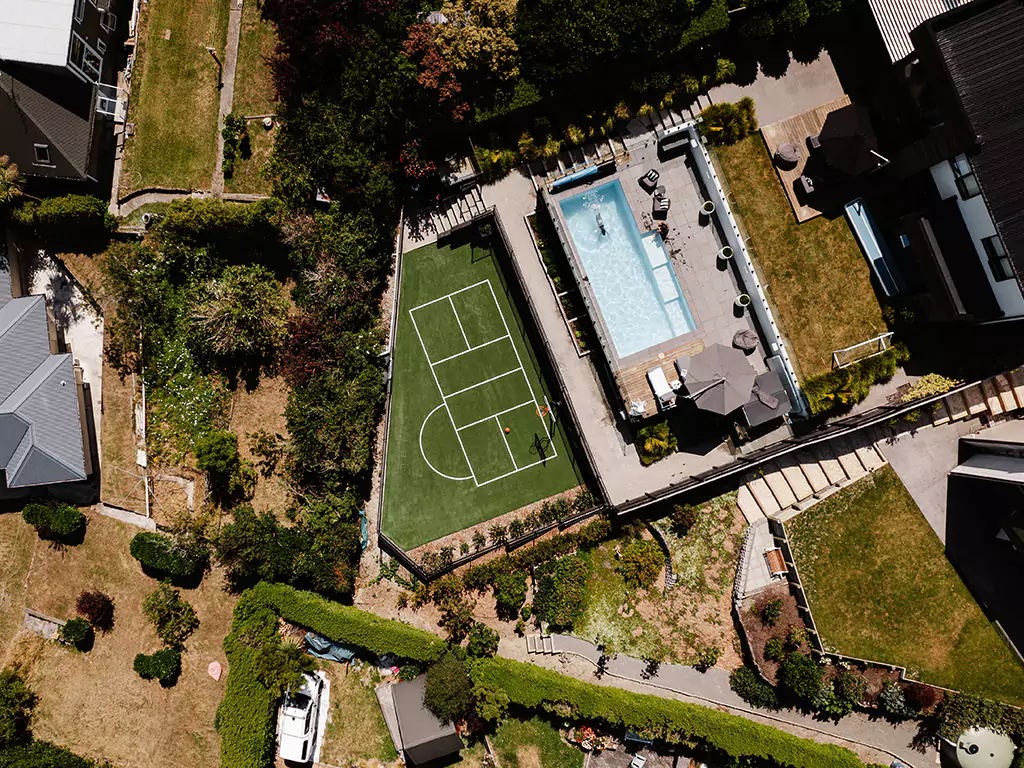Artificial Grass vs. Ready Lawn/Roll out Lawn: Which is Right for Your Home? Artificial grass is becoming a smart choice among homeowners worldwide. Thanks to advancements in synthetic grass technology, the days of cheap plastic blades and rapid sun damage are long gone. Today’s artificial turf can look remarkably natural, making it a fantastic option for those seeking a beautiful, low-maintenance lawn. But how do you decide which type of grass is best for your backyard? When choosing between artificial and natural grass, it’s important to compare maintenance routines, costs, and how each option will fit your needs. Let’s explore the pros and cons of both to help you make an informed decision!
Pros of Natural Grass
• Affordable initial cost. Starting a ready lawn is relatively budget friendly, with low upfront costs for soil, seeds, or sod. This DIY-friendly project can be a great option if you’re looking to keep initial expenses down.
• Potential for longevity. If you enjoy gardening and are willing to invest time in your lawn, natural grass can last for many years. A well-maintained lawn is rewarding and can offer a lush, green landscape as a result of your efforts.
Cons of Natural Grass
• High maintenance requirements. Maintaining a healthy, vibrant natural lawn demands significant time and effort. Regular tasks include mowing, weeding, fertilising, watering, overseeding, and pest control. For those with busy schedules, this can be a major drawback.
• Ongoing costs. The cost of maintaining natural grass adds up over time. Equipment like lawnmowers, trimmers, and other tools can be pricey, and professional lawn care services, while convenient, can become costly. Regular expenses for fertilisers, seeds, and pest control also contribute to the ongoing financial commitment.
• Environmental impact. Natural grass requires substantial water, especially in dry or drought-prone areas, and maintaining it can lead to high water usage. Additionally, chemical runoff from fertilizers and weed treatments can harm surrounding ecosystems. During periods of water restrictions, your natural lawn may suffer, leading to a less appealing appearance.
Pros of Artificial Grass
• Low maintenance. Artificial grass significantly reduces the time and effort needed for lawn care. While not completely maintenance-free, it eliminates the need for mowing, watering, and weeding, allowing you to spend more time enjoying your outdoor space.
• Environmentally friendly. Artificial turf is a more smart and sustainable choice, requiring little to no water and reducing the need for harmful chemicals and emissions from lawn equipment. Lifestyle Lawns residential range is able to be recycled providing an eco friendly solution.
• Year round appeal. Enjoy a perfectly green lawn all year with artificial grass that looks and feels like the real thing. With a variety of options available, you can achieve a beautiful outdoor area that remains vibrant and lush, regardless of the season.
• Customisable to your needs: Artificial grass offers versatility, allowing you to design your outdoor space to suit your lifestyle. Whether you’re creating a play area for kids, a pet-friendly zone, or a low-maintenance relaxation spot, synthetic turf can be tailored to meet your needs and preferences.
Cons of Artificial Grass
• Higher initial investment: The upfront cost of installing artificial grass can be substantial, considering the materials, base preparation, and professional installation. However, these costs are often offset over time by the savings on maintenance, water, and lawn care products
• Limited Lifespan: While artificial grass is highly durable, it will eventually need to be replaced, typically after 10 to 15 years, depending on usage. This replacement can be seen as an opportunity to refresh your space and incorporate new design trends or features. Lifestyle Lawns infill option Envirofill has a 16 year warranty so can be recycled and reused for multiple turf life cycles.
Making the choice…
Deciding between artificial and natural grass comes down to your budget, maintenance preferences, and how you plan to use your outdoor space. For those seeking a low-maintenance, eco-friendly option that looks great year-round, artificial grass is a clear winner. On the other hand, if you enjoy gardening and don’t mind the upkeep, natural grass can be a rewarding choice. For more guidance on selecting and installing the perfect artificial grass for your home, contact our team today! We’re here to help you create an outdoor space that’s both beautiful and functional.

